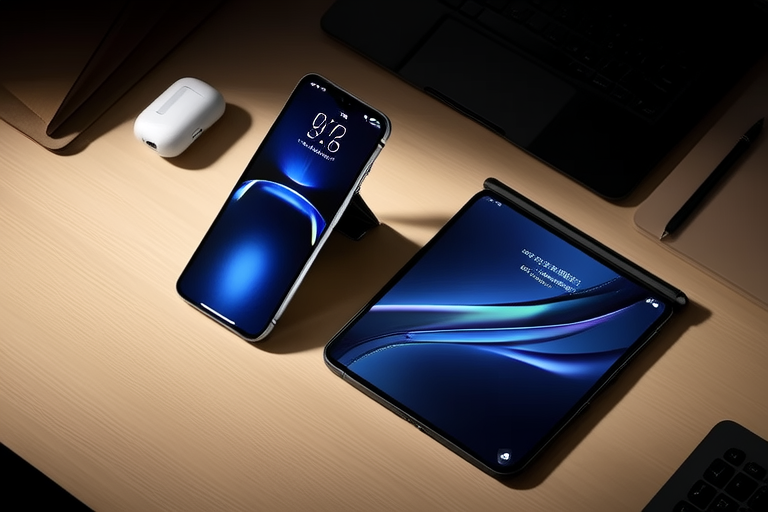“`html
Top Features to Look for When Choosing Between a Smartphone or Tablet
Introduction
The decision between a smartphone and a tablet is often influenced by personal needs and preferences. Whether you’re looking for a device to manage your daily tasks, entertain yourself, or stay connected, understanding the key features can make all the difference. This article will guide you through the essential factors to consider when choosing between a smartphone and a tablet.
1. Screen Size and Resolution
The screen size and resolution are crucial factors in determining the user experience of both smartphones and tablets. Smartphones typically have smaller screens ranging from 5 to 6 inches, while tablets offer larger displays, usually between 7 and 12 inches. A larger screen provides a better viewing experience for activities like reading, watching videos, and gaming. Higher resolutions, such as Full HD or Quad HD, enhance image clarity and detail, making content more immersive.
For instance, a 10-inch tablet with a 2K resolution offers a more cinematic experience compared to a 6-inch smartphone with a standard HD display. The choice between these two depends on how you intend to use the device.
2. Portability
Portability is another critical factor to consider. Smartphones are designed to be lightweight and compact, making them ideal for carrying around in pockets or small bags. Tablets, on the other hand, are bulkier and heavier, but they offer more versatility in terms of usage. For example, a 10-inch tablet may be more convenient for watching movies or browsing the web, but it might be cumbersome to carry during a long commute.
The form factor of each device also plays a role in portability. Some tablets come with detachable keyboards, transforming them into portable laptops, which adds to their convenience.
3. Battery Life
Battery life is an essential consideration, especially for those who rely heavily on their devices throughout the day. Tablets generally have longer battery lives than smartphones due to their larger battery capacities. However, this can vary depending on the model and usage patterns. For instance, a tablet with a 10,000mAh battery can last up to 12 hours of continuous use, whereas a smartphone with a 4,000mAh battery might only last 8 hours under similar conditions.
To extend battery life, it’s advisable to reduce screen brightness, limit background apps, and enable power-saving modes. Advances in battery technology, such as fast charging and efficient power management, have significantly improved the longevity of both smartphones and tablets.
4. Processing Power and Performance
Processing power and performance are vital for smooth operation and multitasking. Modern smartphones are equipped with powerful processors, such as the Qualcomm Snapdragon series or Apple’s A-series chips, offering excellent performance for everyday tasks. Tablets, particularly those running iPadOS or Android, often feature similar processors, but they may have more RAM, enabling smoother multitasking and handling more demanding applications.
For example, a tablet with 6GB of RAM can handle multiple browser tabs, video streaming, and photo editing simultaneously without lag. In contrast, a smartphone with 4GB of RAM might struggle with the same tasks if too many applications are open.
5. Operating System
The choice of operating system (OS) can greatly affect the user experience. Smartphones predominantly run iOS or Android, while tablets often use iPadOS or Android. iOS is known for its seamless integration with other Apple products and a curated app store, ensuring a consistent and secure environment. Android, on the other hand, offers greater flexibility and customization options, allowing users to tailor their devices to their liking.
iPadOS is specifically optimized for tablets, providing features like split-screen multitasking and enhanced productivity tools. Android tablets also support multitasking and offer a wide range of apps, though they may not be as polished as their iOS counterparts.
6. Storage and Expandability
Storage capacity is crucial for storing photos, videos, apps, and other data. Smartphones typically offer internal storage options ranging from 64GB to 256GB, with some models supporting expandable storage via microSD cards. Tablets usually come with larger internal storage options, starting from 32GB and going up to 512GB or more. However, not all tablets support expandable storage, so it’s important to check the specifications before purchasing.
The amount of storage you need depends on your usage habits. If you frequently take photos and videos or download large files, you’ll likely require more storage. Conversely, basic users might find 64GB sufficient for most tasks.
7. Camera Quality
Cameras are a significant selling point for both smartphones and tablets. Smartphones are renowned for their high-quality cameras, often featuring multiple lenses for different focal lengths. Tablets, while less focused on photography, still offer decent camera capabilities, especially for casual use. For example, the Apple iPad Pro features a 12MP wide-angle camera and a 10MP ultra-wide lens, making it suitable for video calls and basic photography.
Smartphones excel in low-light photography and portrait mode, thanks to advanced sensors and software optimizations. Tablets, however, may lack the same level of camera sophistication but can still produce acceptable results for everyday use.
8. Connectivity Options
Connectivity options, such as Wi-Fi, Bluetooth, and cellular networks, are essential for staying connected and transferring data. Most smartphones and tablets support Wi-Fi and Bluetooth, with many now featuring 5G connectivity. 5G networks offer faster download speeds and lower latency, enhancing the overall user experience.
Additional features like NFC, USB-C ports, and wireless charging add convenience. For instance, NFC allows for contactless payments, while USB-C ports facilitate faster data transfer and charging. Wireless charging is also becoming increasingly common, making it easier to charge your device without needing cables.
9. Durability and Build Quality
Durability and build quality are important considerations, especially for those who use their devices in harsh environments. Smartphones and tablets are often made from aluminum, glass, or plastic, each with its own set of pros and cons. Aluminum and glass provide a premium feel but can be more prone to damage, while plastic is more durable but less aesthetically pleasing.
Many manufacturers now offer ruggedized versions of both smartphones and tablets, featuring enhanced water resistance and shock absorption. These features are particularly useful for outdoor enthusiasts or individuals who frequently drop their devices.
10. Price and Value for Money
The price of smartphones and tablets varies widely depending on brand, model, and features. High-end smartphones can cost upwards of $1,000, while budget models start at around $200. Tablets tend to fall within a similar price range, with premium models like the iPad Pro commanding higher prices due to their advanced features.
When determining value for money, consider the features and performance you need. A mid-range smartphone with ample storage, good camera quality, and reliable battery life might be sufficient for most users, while a premium tablet could offer better value for those who require more functionality and screen real estate.
Conclusion
In conclusion, choosing between a smartphone and a tablet requires careful consideration of several factors, including screen size, portability, battery life, processing power, operating system, storage, camera quality, connectivity options, durability, and price. By weighing these factors against your specific needs and preferences, you can make an informed decision that best suits your lifestyle.
Ultimately, the right choice depends on how you plan to use the device. Whether you prioritize portability, battery life, or performance, there’s a device out there that meets your requirements.
Call to Action
We invite you to share your thoughts on which features you prioritize when choosing between a smartphone and a tablet. If you’re interested in exploring more detailed comparisons, we recommend checking out expert reviews and forums for additional insights.
“`


